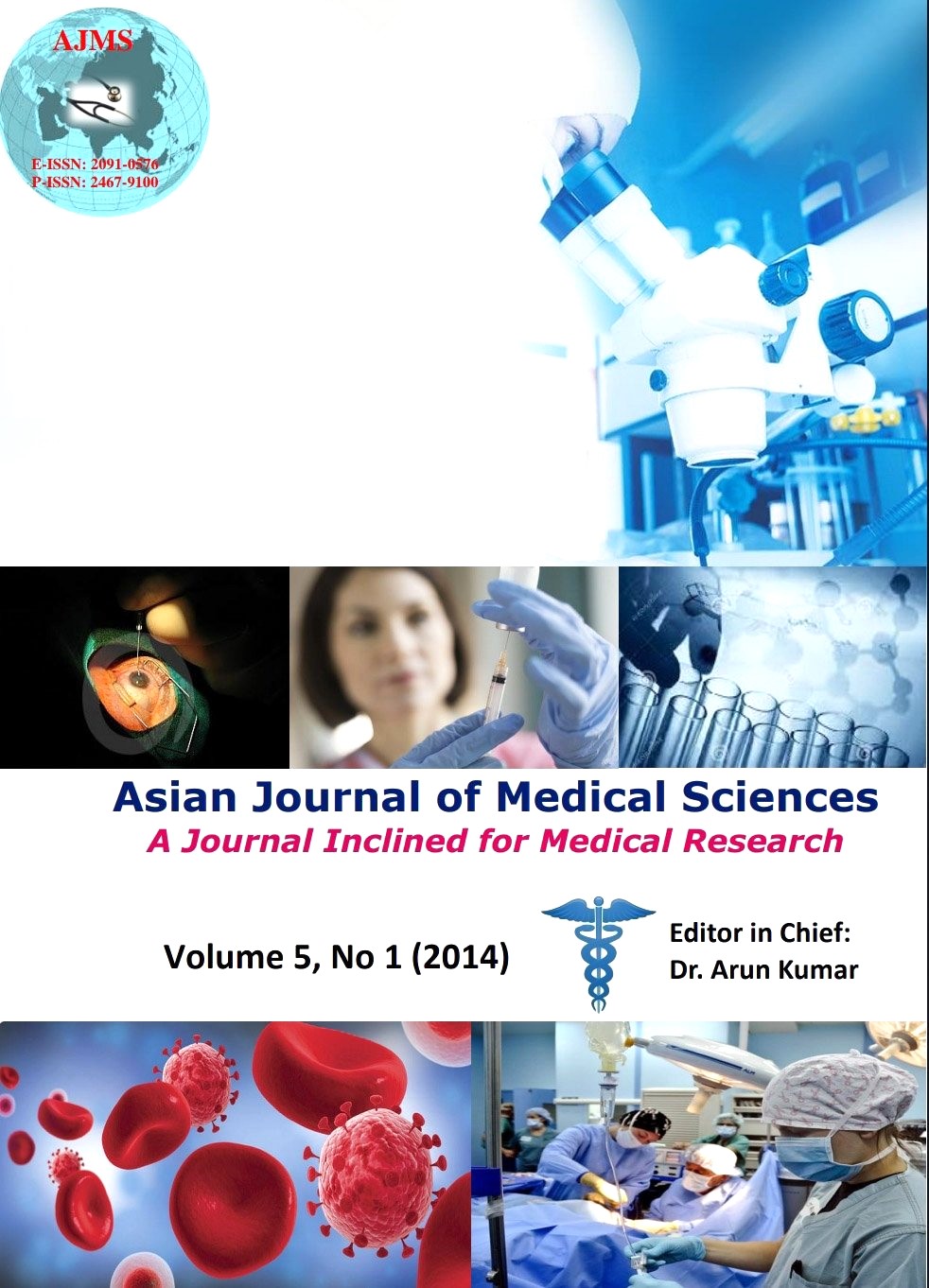Common Carotid Artery Intima-Media Thickness Reflects the Cumulative Burden of Atherosclerosis and Predicted Well by Total-C/HDL-C Ratio in Type-II Diabetic Patients- A Case Control Study Based from Kolkata, India
Keywords:
Diabetes Mellitus, Dyslipidemia, Glycated haemoglobin, Common Carotid Artery Intima-Media thickness, KolkataAbstract
Background: Diabetes Mellitus (DM) is frequently associated with the development of premature atherosclerotic vascular disease and is the major cause of morbidity and mortality. Approximately 80% of all deaths and more than 75% of all hospitalizations are due to CAD. Individuals with DM are usually associated with accelerated atherosclerosis. Common Carotid artery intima-media thickness (CCAIMT) is now also considered as a surrogate marker of atherosclerosis.
Materials and Methods: This case-control study was conducted from Jan, 2011 to June, 2012 among Type-II diabetes, aged between 30-80yrs. Patients with Type-I diabetes, aged <30yrs or >80yrs and other secondary causes of diabetes, hypertensive, smokers and patients under therapy with lipid lowering drugs were excluded from this study. The biochemical tests were done in the department of Biochemistry, Nilratan Sarkar Medical College and Hospital, using standardized reagent kits. CCAIMT was measured by high resolution imaging using 10MHz transducer in the department of Radiodiagnosis, Nilratan Sarkar Medical College and Hospital.
Results: The results of our study indicate that dyslipidemic diabetic patients had significantly higher blood glucose at any phase along with glycated haemoglobin compared to controls. The lipid variables were also significantly higher in the diabetes patients with dyslipidemia compared to controls except HDL levels were significantly higher in control. CCAIMT was higher in the dyslipidemic group (1.71 ± 0.57mm) compared to the non-dyslipidemic group (0.77 ± 0.10) which was statistically significant (p value <0.001).
Conclusion: CCAIMT reflects the cumulative burden of atherosclerosis and is highly correlated and predicted well by Total-C/HDL-C ratio in Type-II diabetic patients. So it is advised that a direct examination of the vessel wall is extremely essential for early detection of the affected individuals so that the cost burden in Intensive coronary care unit can be minimized and also the individual can be advised to control the extensive dyslipidemia through dietary restrictions and exercise.
DOI: http://dx.doi.org/10.3126/ajms.v5i1.8450
Asian Journal of Medical Science Vol.5(1) 2014 pp.9-14
Downloads
Downloads
Published
How to Cite
Issue
Section
License
Authors who publish with this journal agree to the following terms:
- The journal holds copyright and publishes the work under a Creative Commons CC-BY-NC license that permits use, distribution and reprduction in any medium, provided the original work is properly cited and is not used for commercial purposes. The journal should be recognised as the original publisher of this work.
- Authors are able to enter into separate, additional contractual arrangements for the non-exclusive distribution of the journal's published version of the work (e.g., post it to an institutional repository or publish it in a book), with an acknowledgement of its initial publication in this journal.
- Authors are permitted and encouraged to post their work online (e.g., in institutional repositories or on their website) prior to and during the submission process, as it can lead to productive exchanges, as well as earlier and greater citation of published work (See The Effect of Open Access).




